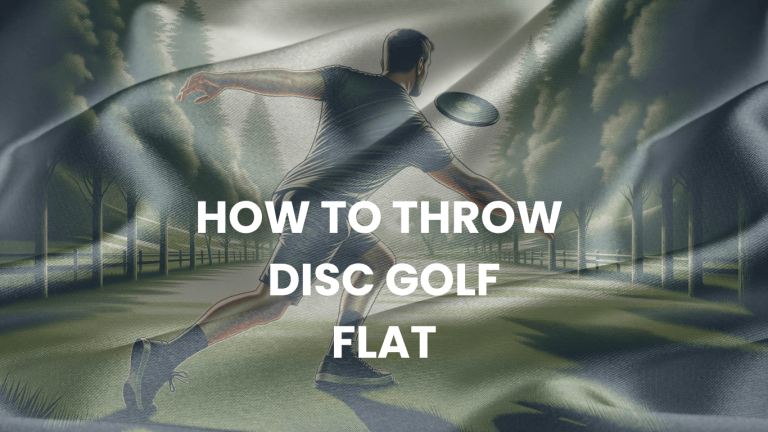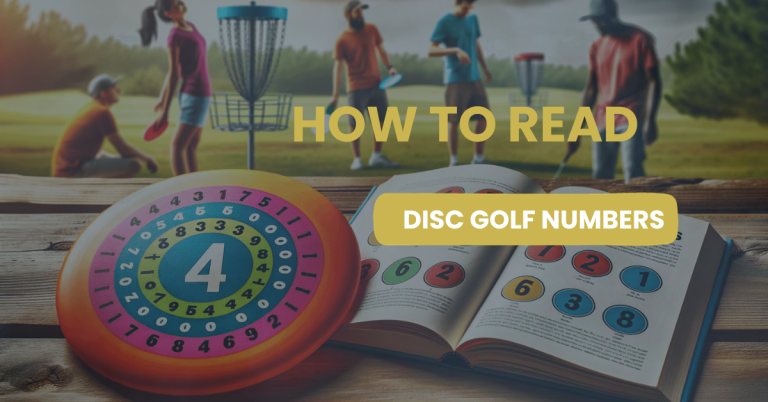Find Your Weakness to Eliminate Strokes Off Your Round? Find The Strategic Practice For Your Stroke
Discover expert disc golf practice strategies to identify weaknesses, improve skills, and lower your scores significantly. Start mastering today! Find Your Weakness to Eliminate Strokes Off Your Round” – this phrase has been my mantra since I started playing disc golf. As a passionate player, I’ve learned that the key to success lies in recognizing and tackling my weaknesses. It’s not just about throwing the disc; it’s about understanding where your game falls short and what you need to improve.
From grip issues to release angles, every aspect of your game can be fine-tuned. I remember analyzing my throws, identifying that my backhand needed more work than my forehand. It was a game-changer! This approach isn’t just about practicing harder; it’s about practicing smarter. By focusing on your weak spots, you can shave crucial strokes off your round, elevating your disc golf game to new heights.
Find Your Weakness to Eliminate Strokes Off Your Round?
Embarking on a journey to “Find Your Weakness to Eliminate Strokes Off Your Round” in disc golf has been a transformative experience for me. Initially, I focused purely on distance and power, but I soon realized that refining specific aspects of my game was crucial. By scrutinizing my playing style, I discovered that my approach shots were my Achilles’ heel.
This revelation led me to practice targeted drills, which significantly improved my accuracy and consistency. Every round became an opportunity to learn and grow. I’ve come to understand that in disc golf, as in life, recognizing and addressing your weaknesses is a pivotal step towards achieving excellence and lowering your scores.
Introduction: Embracing Challenges in Disc Golf
Disc golf has always been a game of finesse and strategy for me. It’s a sport where the smallest of details can make a significant difference. When I first picked up a disc, I was captivated by the blend of physical skill and mental strategy involved. The flight of the disc, the way it curves and glides, it’s almost like a dance with nature.
Identifying Weaknesses: The First Step to Improvement
My journey in disc golf has been full of highs and lows. I quickly learned that understanding and acknowledging my weaknesses was essential. I recall a tournament where my putting was off; it cost me crucial points. That moment was a wake-up call. I realized that “Find Your Weakness to Eliminate Strokes Off Your Round” wasn’t just a catchy phrase; it was the essence of improving my game.
The Joys of Overcoming Challenges
Despite the hurdles, the joy of overcoming these challenges in disc golf is incomparable. The first time I successfully adjusted my grip and saw my disc soar exactly as I intended, the feeling was exhilarating. It’s moments like these that keep me hooked to the sport, constantly striving to better my technique and understanding of the game.

Continuous Learning and Growth
In disc golf, every round is a learning experience. Whether it’s adjusting to different terrains or experimenting with new throwing techniques, the game always keeps me on my toes. The satisfaction of seeing tangible improvements in my game, stroke by stroke, is what drives my passion for disc golf.
The Thrill of Disc Golf
The thrill of watching the disc fly, making those precise shots, and the camaraderie among fellow players make every round of disc golf a unique adventure. It’s not just about winning; it’s about personal growth, mastering the art of the throw, and enjoying the great outdoors.
You May Also Like To See: Can’t Get Snap in Your Throw?
Understanding Your Current Disc Golf Skills
When I first started playing disc golf, I quickly realized the vast array of challenges this sport presents. One of the most common hurdles I faced was mastering the different types of throws – each requiring its own unique technique. Reflecting on my past game performances, I noticed a pattern in my throws, particularly in how wind conditions affected them. This self-assessment was crucial in identifying areas needing improvement.
For anyone looking to elevate their disc golf game, I’d recommend a similar introspection. Look back at your previous rounds. Were your drives consistently veering to the left? Did your putting suffer in certain situations? Understanding these nuances is key to developing your skills further.

How to Practice Disc Golf Effectively
I learned early on that effective practice in disc golf isn’t just about throwing the disc repeatedly. It’s about focused and intentional practice. This means setting specific goals for each session. For instance, I would dedicate one day to working solely on my forehand drives, paying attention to grip, stance, and release.
Creating a balanced practice routine is essential. Mix up your practice sessions to cover different aspects of the game: long drives, controlled mid-range shots, and precise putts. Remember, quality trumps quantity – it’s better to have a focused 30-minute session than an hour of unfocused throwing.
Incorporating Drills into Your Routine
Drills are the backbone of skill improvement in disc golf. One drill that significantly improved my game is the “Putt-Around-the-Circle” drill. This involves placing markers in a circle around the basket and practicing putts from each point. It helped me develop accuracy and confidence in my putting from various angles and distances.
Another beneficial drill is the “Fieldwork Drill.” I often practice this by setting targets at different distances and throwing various discs to reach them. This drill enhances my control and understanding of how each disc behaves in flight.
Analyzing Your Game: Understanding Bogeys and Double Bogeys
In my journey of playing disc golf, understanding the root causes of bogeys and double bogeys was pivotal. I realized that common mistakes like misjudging the wind or selecting the wrong disc often led to these frustrating scores. Reflecting on such rounds, I learned to analyze each throw and decision, pinpointing where things went awry.
A strategy that worked for me was revisiting specific holes where I scored bogeys or double bogeys. I’d practice those holes repeatedly, focusing on different approaches and disc selections. This method helped me turn my weaknesses into strengths, teaching me valuable lessons about course management and shot selection.
Turning Pars into Birdies: Advanced Strategies
Advancing from par to birdie on challenging holes was another crucial aspect of my disc golf improvement. Fine-tuning my approach shots and putts made a significant difference. I spent hours practicing different putting techniques, understanding the nuances of grip, stance, and release.
An expert tip that elevated my game was to visualize the shot before executing it. This mental practice, coupled with physical repetition, sharpened my skills on tough holes. I learned to approach each shot with a strategy, considering factors like wind direction, terrain, and the disc’s flight characteristics.

Regular Practice: Building Consistency
Consistency in disc golf doesn’t happen overnight. It’s the result of regular, focused practice. I established a practice schedule that was realistic yet challenging, ensuring I dedicated time to different aspects of the game.
Balancing practice sessions between driving, mid-range shots, and putting was key. I also incorporated physical fitness and mental training into my routine. This holistic approach not only improved my physical skills but also bolstered my mental resilience on the course.
Advanced Techniques and Strategies
As I progressed in disc golf, diving into advanced techniques became essential for my growth. I learned that power is not just about physical strength; it’s about technique. Mastering the ‘hyzer flip’ shot, where the disc flips up from a hyzer angle and flies straight, was a game-changer. Another advanced strategy I adopted was learning to read the wind better, which significantly improved my accuracy on open-field throws.
You May Also Like To See: How to Aim a Backhand in Disc Golf?
Mental strategies also play a crucial role in advanced disc golf. I began to focus on mental visualization before each shot, picturing the flight path in my mind. This practice helped me stay calm and focused during high-pressure moments in the game.
Learning from the Pros: Insights and Tips
One of the most beneficial steps in my disc golf journey was seeking insights from professional players. Attending workshops and watching tournament footage, I picked up invaluable tips. One pro taught me the importance of a consistent pre-throw routine, which I’ve incorporated into my game. It helps in maintaining a steady rhythm and focus.
Applying these professional strategies to my game involved a lot of trial and error, but the improvement was noticeable. For instance, learning the ‘nose down’ throwing technique from a pro significantly increased the distance and accuracy of my drives.
Tracking Progress and Setting Goals
Tracking progress is crucial in disc golf. I started keeping a detailed log of my practice sessions and games, noting what worked and what didn’t. This practice helped me identify patterns and areas needing improvement.
Setting realistic yet challenging goals has been a key motivator for me. Whether it’s improving my putting accuracy or mastering a new throwing technique, having clear goals keeps me focused and driven. Celebrating small victories along the way has also been essential in keeping my passion for the game alive.
Conclusion
In my quest to “Find Your Weakness to Eliminate Strokes Off Your Round,” I’ve embraced both triumphs and challenges in disc golf. It’s been a journey of self-discovery, refining skills, and understanding the mental game. Remember, every round is a new opportunity to learn and grow. Keep practicing, stay focused, and most importantly, enjoy every throw!
FAQs
Q1: What’s the best way to identify weaknesses in my disc golf game?
Answer:
Reflect on your game performance, especially in tricky situations, to pinpoint areas needing improvement.
Q2: How often should I practice to effectively eliminate strokes off my round?
Answer:
Consistency is key! Aim for regular, focused practice sessions tailored to your specific needs.
Q3: Can mental strategies really help in improving my disc golf game?
Answer:
Absolutely! Mental visualization and a positive mindset significantly enhance your performance on the course.







